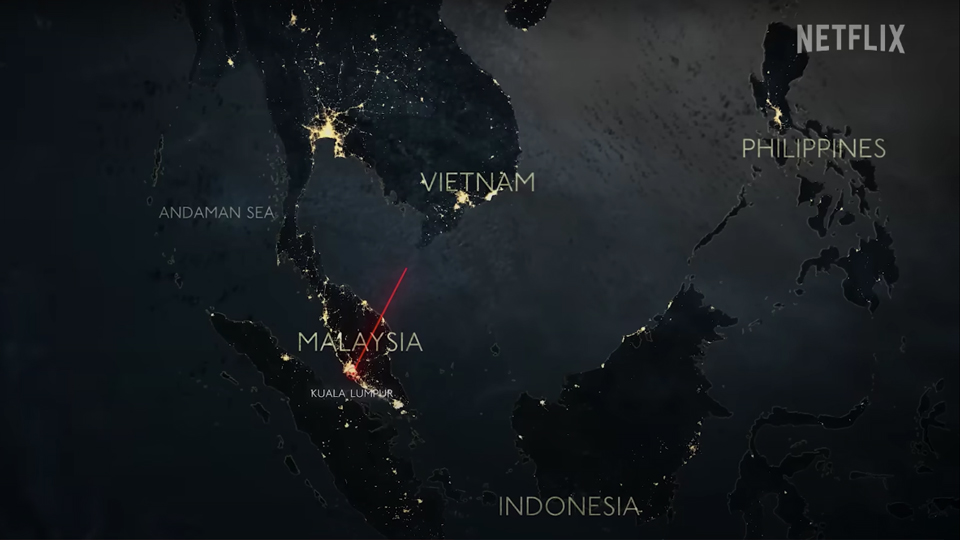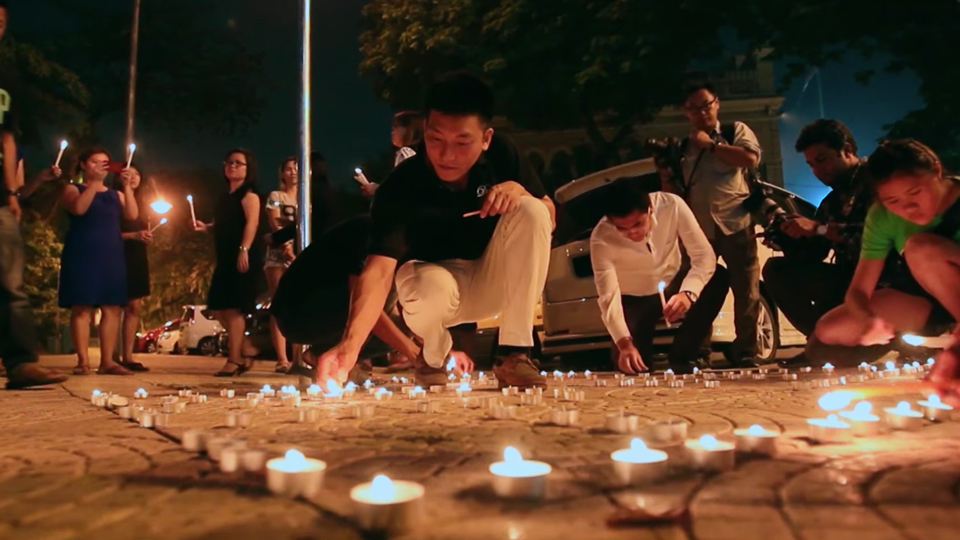
On March 8, 2014, a Malaysia Airlines flight departed from Kuala Lumpur, Malaysia just after midnight.
It was 12:41 am, a routine red-eye flight earmarked for Beijing, China as its final destination. The flight was scheduled to last approximately some 6 hours 25 minutes, not too dissimilar from a routine cross-country flight from New York to Los Angeles.
Thirty-six minutes after it departed, as it was departing Malaysian airspace and entering the South China Sea, the plane fell off the map. As we all know, the plane has never been found.
These are where the facts end, and the theories abound: Netflix’s three-part documentary series, "MH370: The Plane That Disappeared," attempts to explain the mystery almost ten years later, with almost no further conclusiveness or certainty than the following months after its initial disappearance.
The narrative is a weird, beguiling hodgepodge of conspiracy theories juxtaposed against what should have been the focus of the story: The plane carried 239 people, consisting of 227 passengers and 12 crew members, leaving hundreds of families bereft. To that end, the story is nothing short of heartbreaking.
There is a particular soul-tearing moment in the first episode, showing footage from the hotel “waiting room” that family and friends are escorted to immediately following the plane’s disappearance, where they waited out to hear news about their loved moments.

People gather for a vigil for the missing people onboard the plane. (Courtesy of Netflix)
To remind you that there were people involved, there are personal interviews from next of kin; one Frenchman, Ghyslain Wattrelos, lost two of his children and wife onboard.
In another particularly harrowing moment, footage from the search boats show the nearly unbelievable, tumultuous, tsunami-like conditions endured by the Australian search and rescue teams scouring the Indian Ocean. It's a sobering shot.
By 2014, I was two years fresh out of a four-year stint as a reporter in Asia, and had spent substantial time in places like Hong Kong, Kuala Lumpur, and yes, Beijing. Malaysia Airlines, along with Singapore Airlines, had somewhat established themselves as one of the premier airlines throughout the region.
The shock to hear an entire plane, never mind from arguably one of the best airlines in the world— Skytrax consistently ranks Malaysia Airlines as one of the four-star airlines in the world—had disappeared, more or less, stopped the entire aviation and travel industry in its tracks.
Exploring the theories behind the MH370 disappearance
From what the documentary does make clear, is there are any number of conspiracy theories to match the questions of MH370’s disappearance.
As I’m inclined to believe that often the simplest answer is often the most truthful scenario, the documentary does an amazing job of spinning the number of military and political theories that surround it.
The bulk of it explores everything from Russian hijacking, American interference, down to the nebulous motives of pilot Captain Zaharie Ahmad Shah. It also follows the efforts of grassroots citizens in their quest to answer what happened (definitely spoofing Misty Quigley vibes
from Yellowjackets here).

CNN dives deeper into the conspiracies. (Courtesy of Netflix)
Though the filmmakers briefly interview Fuad Sharuji, the former crisis director of the Malaysia Airlines, and members of the Australian Transport Safety Bureau, there are noticeably few statements from the officials involved.
There is also no commentary from Boeing as well, considering the plane that disappeared was a Boeing 777-200ER. This becomes more and more noticeable as the filmmakers dive into the mystery behind the wreckage found in 2015, starting with an unidentified flaperon that washes up ashore on Réunion Island, in the Indian Ocean.
Aviation safety experts like Christine Negroni, who has covered airline crashes for The New York Times and CNN, and was nominated to the National Transportation Safety Board in 2009 are also missing from the filmmakers' narrative.
Negroni writes, likely, the disappearance of the MH370 was likely less insidious:
To me, that insensible action is a bright and shining clue that the pilots’ actions were illogical because they were incapable of logical thought. My scenario is that the plane depressurized at 35 thousand feet. The first officer, alone in the cockpit, put on his emergency oxygen mask but failed to get 100 percent oxygen under pressure which would be required to restore his intellectual acuity.
Instead, with the insidious feeling of well-being that characterizes hypoxia – or oxygen starvation – the pilot turned the plane back toward Kuala Lumpur. He knew there was a problem but didn’t have the brain processing power to act appropriately. This explains why he turned in one direction then another before passing out as the plane headed into the world’s most remote sea.
In its report, the Malaysian team throws even more weight on that possibility by confirming that the crew emergency oxygen bottles were serviced immediately prior to the flight. And three months before that, the hoses to the oxygen system had been replaced following a Boeing Service Bulletin.
Finding closure for the missing passengers' families

Blaine Gibson, the adventurer who found multiple pieces of plane debris. (Courtesy of Netflix)
Instead, what the disappearance of MH370 really highlights are the utter and complete disarray of the human spirit when people are unable to get the answers they need.
In one particular poignant moment, Blaine Gibson, an everyday-man-turned-Indiana-Jones, displays an uncanny knack for finding pieces of plane debris—which may or may not have actually come from the missing plane, as the documentary likes to remind us—and searches for more wreckage with family members from the missing plane.
It’s there, in those brief glimpses, that we see any type of real truth: That no one will ever truly know what actually happened, and the lives of those that knew the 239 passengers on the plane were forever, irrevocably changed.



